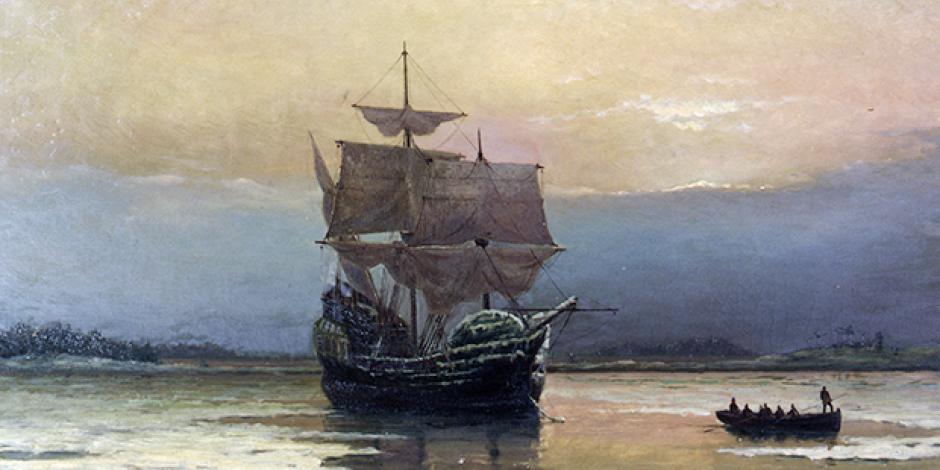Four hundred years ago, in September 1620, a sailing ship called the Mayflower left Plymouth on the south coast of England and head for sth.Kurs auf etw. nehmenheaded west for the New World. The Mayflower, a three-mast vesselSchiffvessel known as a carrackKarracke, Segelschiffcarrack, was about 30 m long and 7.5 m wide. Packed together on this ship were around 30 crew members and 102 passengers, many of them Puritans, as well as a number of adventurers and ne’er-do-well (never)Tunichtgutne’er-do-wells. The Puritans were hoping to start a new life far away from the religious persecutionVerfolgungpersecution they had experienced in England and Holland. The Puritans were Protestants who felt that the new Church of England established by King Henry VIII in 1534 was not rigorousstrengrigorous enough.
On the Mayflower, they lived in a space called the between-deck, which probably had a height of around 152 cm, and many of the passengers became extremely seasick in these crampedeng, beengtcramped conditions.
When the Mayflower left England, it was already late in the year to be crossing the Atlantic. The Puritans had originally planned to sail in two ships: the Mayflower and the smaller Speedwell. The second ship, however, sprang a leak: spring a ~leck schlagenleak three times, delaying departure each time by weeks. Finally, the Mayflower set off alone. The ship was hit by a number of bad storms on the crossing. One storm damaged the Mayflower halfway through the journey, cracking a thick wooden beamBalkenbeam that supported the ship’s frame. Luckily, crew and passengers were able to repair the beam, but the captain, Christopher Jones, was worried that further bad weather might wreckzerstörenwreck the ship completely.
During another galeSturmgale, a young man, John Howland, fell into the sea. He was able to grabpackengrab one of the ship’s ropes, and members of the crew pulled him back on board. Unlike many of the other Puritans who died in the following years, Howland and his wife, Elizabeth, survived — they had ten children and 80 grandchildren.
The only passenger not to survive the sea voyageSeereisesea voyage was William Butten, a young servant. He had been sick for most of the crossing and died toward the end of the voyage. Four other passengers died on the Mayflower while the ship was at anchorvor Ankerat anchor offhier: voroff Cape Cod. The only child born during the crossing was a baby boy, whom the parents named Oceanus. Sadly, he died while still an infantKleinkindinfant — probably during the first winter in the New World.
The Mayflower’s journey took 66 days and the Pilgrims finally reached Cape Cod on November 11, 1620.
Neugierig auf mehr?
Dann nutzen Sie die Möglichkeit und stellen Sie sich Ihr optimales Abo ganz nach Ihren Wünschen zusammen.



